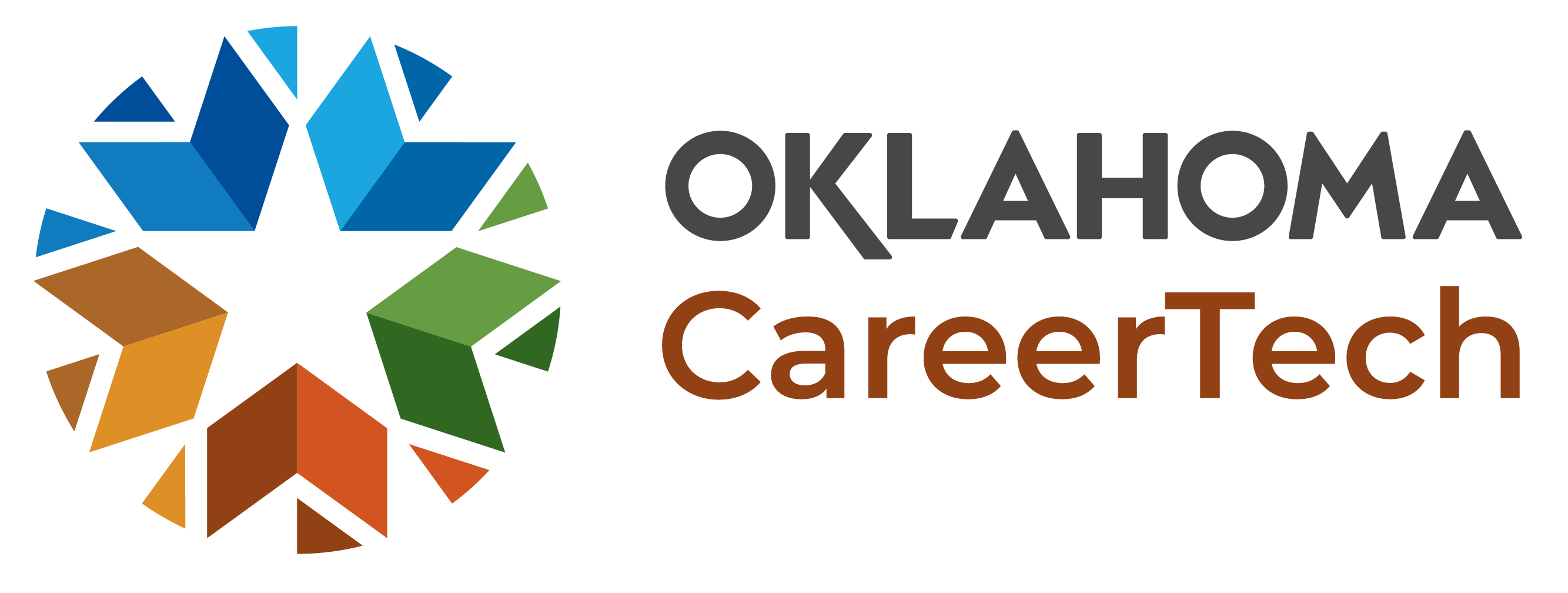By Lee Denney
CareerTech bringing VR to Oklahoma classrooms
Bringing innovation to Oklahoma classrooms is core to CareerTech’s mission to help students explore their interests. That is why Oklahoma CareerTech is investing in virtual reality technology, an increasingly popular innovation that brings lessons to life.
Reading a book about the planets of the solar system has its limits. Seeing the planets of the solar system in a 360-degree digital environment that feels real can send a student’s interest to a whole new level. Imagining the possibilities is no longer necessary, thanks to new educational technology companies wanting to create vivid virtual journeys for teachers and students.
Through VR headsets and training modules, Oklahoma CareerTech is working to help teachers provide students virtual career experiences in agriculture, health care, aerospace and film and television production. Demand for VR in education is expected grow in coming years, and CareerTech wants to help Oklahoma educators meet this inevitable demand.
Experts believe education is one of the industries that is ready to adopt VR technology. Some students are auditory learners, and some are visual learners. VR combines both learning styles.
Teachers should be learning about the benefits of VR in the classroom. VR offers students memorable and immersive experiences that would otherwise not be possible. What’s more, the magic of VR is that it can take students to places throughout the world without leaving the classroom.
In this world of limited attention spans, VR offers immediate engagement. It increases a student’s ability to learn. It increases overall comprehension of complex subjects and theories. It improves their ability to retain information. And it makes learning an active experience.
There is no doubt that VR has a positive educational value. VR should be included in lesson plans because it can bring academic subjects to life.
But the challenge with bringing VR into the classroom is striking the right balance.
VR is best used as a supplemental learning tool. It should not be used to replace traditional means of classroom learning. VR technology should be used to frame the classroom curriculum in a way that sparks curiosity and interest among students. If the right balance can be achieved, this hybrid approach could potentially transform the world of education.
Serving more than 426,000 students through a network of 394 school districts, 29 technology centers, 14 skills centers and 31 adult basic education providers, Oklahoma CareerTech could be the state’s best channel to disseminate VR technology to classrooms across the state.
Many educators have already embraced VR and are using it in the classroom, while others remain reluctant, arguing the technology is too costly, glitchy and more suited for entertainment. In addition, some critics say the content lacks quality and is often unavailable.
But we think the benefits of VR technology far outweigh the drawbacks. VR technology has a distinct and unique part to play for learners of the future. It’s a reality that’s easy for us to see.
Useful links
Follow us on Twitter at @okcareertech and find us on Facebook at OklahomaCareerTech and on Instagram at oklahomacareertech and read our blog, Oklahoma CareerTech Delivers. Find our podcast at https://www.cthorizon.org/.
For news about Oklahoma’s CareerTech System, subscribe to CareerTech communications.
Lee Denney is the interim state director of the Oklahoma Department of Career and Technology Education. Denney served in the Oklahoma House of Representatives from 2004 to 2016. During her last two years in office, she served as speaker pro tempore.


